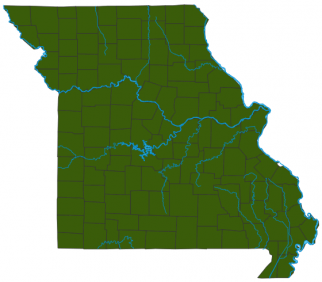
Rose red cap that is sometimes yellowish toward the margin; underside with tiny yellow pores; stalk reddish yellow; all parts slowly bruise blue. Grows singly or in groups of up to several, on the ground under oaks. June–October. Cap convex, becoming flat; rose red to pinkish, sometimes yellowish toward the margin; texture dry, not shiny; flesh is thick, pale yellow, slowly bruising blue when damaged. Pores tiny, angular; yellow, paler with age, slowly bruising blue. Stalk sometimes club-shaped; pinkish yellow with reddish tint toward the bottom; texture dry, dull, smooth; flesh yellow, slowly bruising blue. Spore print dull olive brown. Spores magnified are smooth, elliptical.
Lookalikes: Other Boletus species, some of which may be poisonous. Avoid eating boletes with orange to red pores, and those that bruise blue: “Bruising blue is not for you.”
Cap width: 2–6 inches; stalk length: 2–4 inches; stalk width: ¼–1¼ inches.

Statewide.
Habitat and Conservation
Grows singly or in groups of up to several, on the ground under oaks. The beautiful red cap and the contrasting bright yellow of the underside give the two-colored bolete its name.
Status
Not recommended for eating. Although the two-colored bolete is a safe and delicious edible mushroom, it could easily be confused with poisonous boletes that also bruise blue.
Life Cycle
This species is mycorrhizal: It exists most of the time as a network of cells (mycelium) connected to tree roots, in a symbiotic relationship with the tree—in this case, oaks. (Many trees fare poorly without their fungal partners.) When ready to reproduce, the mycelium sends up the mushroom aboveground—this is the reproductive structure. In boletes, spores are produced in the pores under the cap and are released to begin new mycelia elsewhere. The mycelium of a mushroom can live for decades.
Human Connections
This bolete is related to the prized porcini, Boletus edulis, which does not grow in Missouri. Unfortunately, the two-colored bolete is not recommended because it can easily be confused with similar, but poisonous, boletes. Fortunately, you can buy dried porcini in most upscale grocery stores.
Ecosystem Connections
This is one of many fungus species that help nourish forest trees through symbiosis. The netlike fibers of the fungus cover the surface of a tree’s roots, increasing the surface area and the roots’ ability to absorb water and nutrients. In return, the tree shares nutrients with the fungus.


Mushrooms are a lot like plants, but they lack chlorophyll and have to take nutrients from other materials. Mushrooms are neither plants nor animals. They are in a different kingdom — the fungi. Fungi include the familiar mushroom-forming species, plus the yeasts, molds, smuts, and rusts.
Always be cautious when eating edible mushrooms. Be absolutely sure of the ID, and only eat a small amount the first time you try it to avoid a reaction..





















